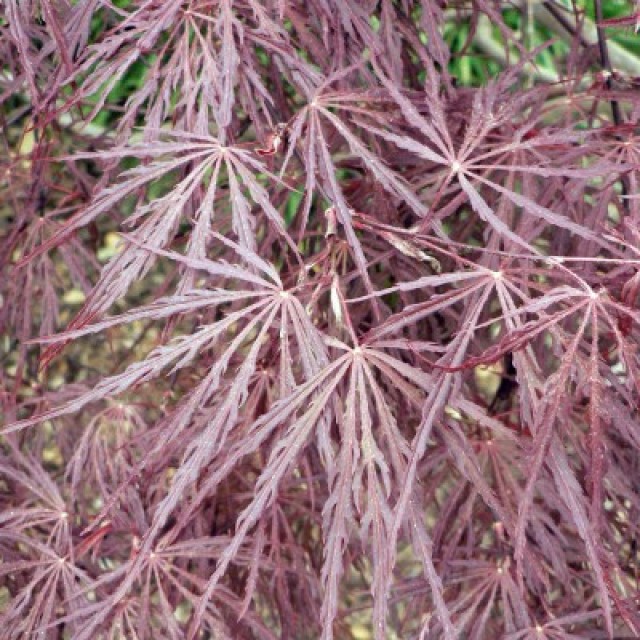COMMON NAME
Red lace-leaf Japanese maple
SCIENTIFIC NAME
Acer dissectum var. dissectum
Plant family
Soapberry (Sapindaceae)
Plant group
Deciduous Trees and Shrubs
This group of red, lace-leaf Japanese maples make a picturesque, weeping mound of stems clothed in opposite, finely dissected, palmate leaves. Panicles of small burgundy to red flowers emerge with the foliage in spring and are followed by samaras (maple seeds).
217 reports
97+
OBSERVERS
217+
OBSERVATIONS
Identification hints
Red, lace-leaf Japanese maple is a group of trees selected from the species for burgundy-red foliage, finely dissected leaves, and a graceful weeping habit. Plants will make a haystack, shaped mound of arching branches with smooth, burgundy stems which become gray and sinuous with age. The foliage is opposite, palmately lobed with deep sinuses and fine texture. The panicles of 1/4 to 1/2 in burgundy to red flowers emerge from the same buds as the leaves in spring and are often lost against the colorful foliage. The paired maple seeds or samaras are burgundy turning gray-brown as they mature.
Did you know?
Japanese maples have been cultivated for over 1500 years in Japan and are still considered to be a necessary part of every Japanese landscape. In the fall, people flock to the mountains for "momijigari" or maple viewing each year.
DISTRIBUTION IN TH U.S.
There is no information available about this species.
HABITAT
There is no information available about this species.
See Menu
- 2021 Chicago Botanic Garden. All Rights Reserved.
-
Creative Commons
BY-NC-SA 4.0 - Terms of Use
- Privacy Policy
- Data Sharing and Citation Policies
- 2021 Chicago Botanic Garden. All Rights Reserved.



